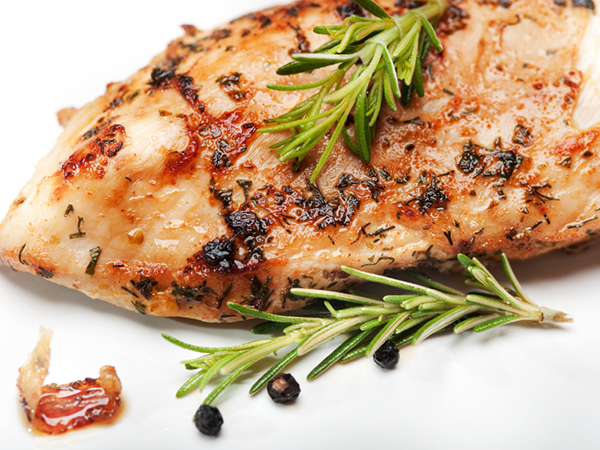News and Information
Breasts vs. Thighs: Which Is More Nutritious?

Tastier...But Is It Healthier?
While some consumers may switch from white to dark meat because of a taste preference, it comes at a price: higher calories, fat and saturated fat, according to Academy Spokesperson Toby Smithson, RDN, LDN, CDE. "A three-ounce portion of chicken breast without the skin contains 142 calories, 3 grams of fat and .9 grams of saturated fat," she says. Meanwhile, a skinless chicken thigh of the same size contains 170 calories, 9 grams of fat, and 3 grams of saturated fat.
Smithson cautions that because these nutrition numbers are for a three-ounce serving, they most likely underestimate the difference between a meal of white meat and a meal of dark meat. "Portion size definitely matters when we are talking about meat and the total amount of fat, saturated fat and calories consumed," she says.
A Simple Trick to Regulate Portion Size
For white or dark meat, Smithson recommends the bone-in option instead of choosing boneless. The bone won't change the nutritional value of the cooked meat, but it can help you eat less. "It's a good visual reminder of how much you have eaten," she says.
Smithson points to an experiment by Dr. Brian Wansink, author of Mindful Eating and an expert in the ways behavior, environment and visual cues affect how the brain registers hunger and satiety. In one of Dr. Wansink's studies, two groups of volunteers were promised "all-you-can-eat" chicken wings. "For one group they had a server constantly removing the chicken bones from the wings consumed. And in the second group, the servers let the bones of the chicken wings pile up on the participants' plates," Smithson says. "The second group ate less chicken because they were able to visualize how much they had eaten."
A Better Dark Meat
Instead of choosing dark chicken meat, Smithson says a better poultry option is dark turkey meat. "It actually fares well as a lower-fat protein food, similar to a chicken breast," she says. Three ounces of roasted skinless dark turkey meat from the drumsticks has 135 calories, 3 grams of fat and 1 gram of saturated fat.
Stay Safe
Whichever cut of raw poultry you ask for, Smithson says remember to handle poultry properly. She says you can reduce your chance of foodborne illness by remembering three important steps: "Clean: Wash your hands before and after handling raw poultry. Separate: Use separate utensils and cutting boards for raw versus cooked and ready-to-eat foods. Cook: To an internal temperate of 165 degrees."



